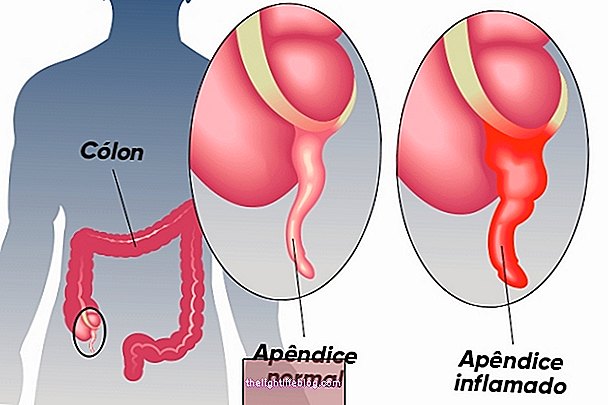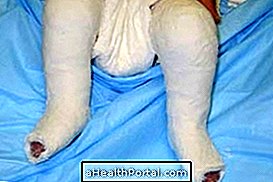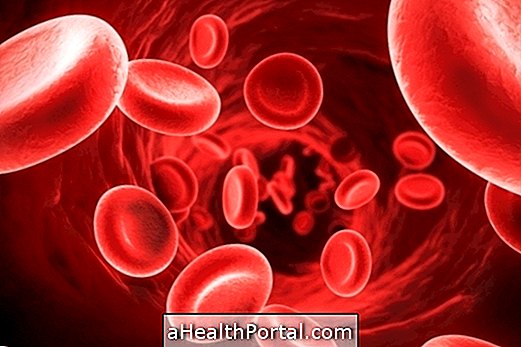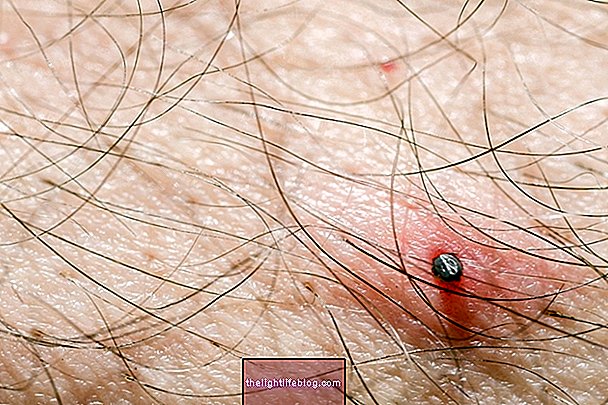Fluid retention corresponds to the abnormal accumulation of fluids within the body's tissues, being more frequent in women during menstruation or pregnancy. Although it does not normally represent a health risk, fluid retention can be quite uncomfortable for the person, as it is often noticed through the swelling that can appear on the face, legs and back.
However, the occurrence of fluid retention can be a sign of illness and, therefore, it is important that the person consults the general practitioner for tests to be carried out and the cause of the retention to be identified, with specific treatment being indicated.

How to know if it is fluid retention
Fluid retention can be perceived by the swelling of one or more parts of the body, being more frequent in the face, belly, legs, arms and back. In addition, it is common for fluid retention to decrease the amount of urine produced and released per day.
One way to know that it is fluid retention is to press the swollen spot for about 30 seconds, if the region is marked it is indicative that there is an accumulation of liquids in the spot. Fluid retention is very common in women during menstruation and is perceived through an increase in abdominal volume. However, as the menstrual cycle passes, the woman eliminates excess fluid accumulated naturally.
Main causes
Although it is common to happen during menstruation and pregnancy, fluid retention can happen due to other factors such as:
- Food rich in salt;
- Decrease in the amount of liquids consumed daily;
- Stay in the same position for a long time;
- Use of some medications, including contraceptives;
- Periods of great hormonal variation;
- Kidney problems;
- Liver diseases;
- Heart problems;
- Changes in thyroid function.
In the event that fluid retention is accompanied by other symptoms such as changes in heart rate, hair loss and excessive weakness, for example, it is important to consult the doctor so that the cause is identified and treatment begins.
Fluid retention in pregnancy
Fluid retention in pregnancy is a normal symptom, because during pregnancy there is an increase in the production of the hormone relaxin that causes the dilation of blood vessels and leading to swelling in the legs and ankles, mainly.
This is because when the blood arrives in the legs it cannot return to the heart so easily, stimulating the accumulation of fluids in the space between the cells, which gives rise to the swelling.
Thus, to avoid fluid retention in pregnancy, women should get plenty of rest during the day, exercise regularly with their legs and elevate their legs at night.
What to do
To avoid fluid retention it is important that the person adopts some habits such as drinking at least 2 liters of water a day, practicing physical activity on a regular basis, reducing the amount of salt consumed on a daily basis, raising the legs at the end of the day and avoid standing or sitting too long. Learn what to do to end fluid retention.
In addition, a way to promote the elimination of accumulated fluid is through the performance of lymphatic drainage, which is a type of massage that promotes the conduction of accumulated fluids to the lymphatic vessels, helping to deflate.
Check out other tips to combat fluid retention in the following video:

Was this information helpful?
Yes No
Your opinion is important! Write here how we can improve our text:
Any questions? Click here to be answered.
Email in which you want to receive a reply:
Check the confirmation email we sent you.
Your name:
Reason for visit:
--- Choose your reason --- DiseaseLive betterHelp another personGain knowledge
Are you a health professional?
NoMedicalPharmaceuticalsNurseNutritionistBiomedicalPhysiotherapistBeauticianOther
.jpg)

-o-que--e-como--feito-o-tratamento.jpg)




-o-que--sintomas-e-tratamento.jpg)


















